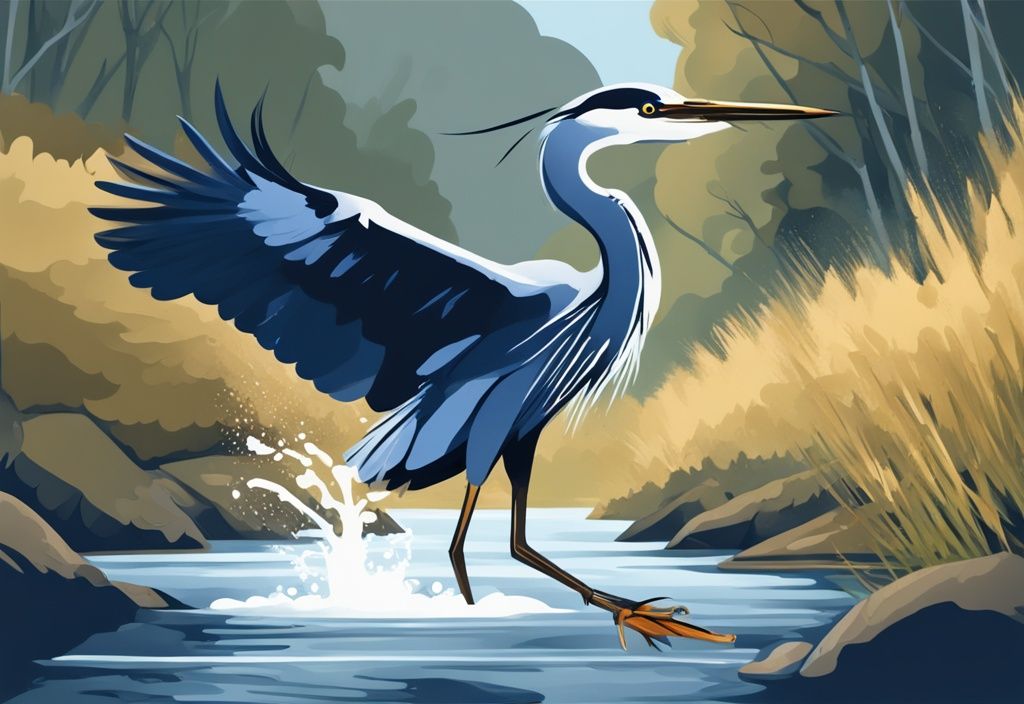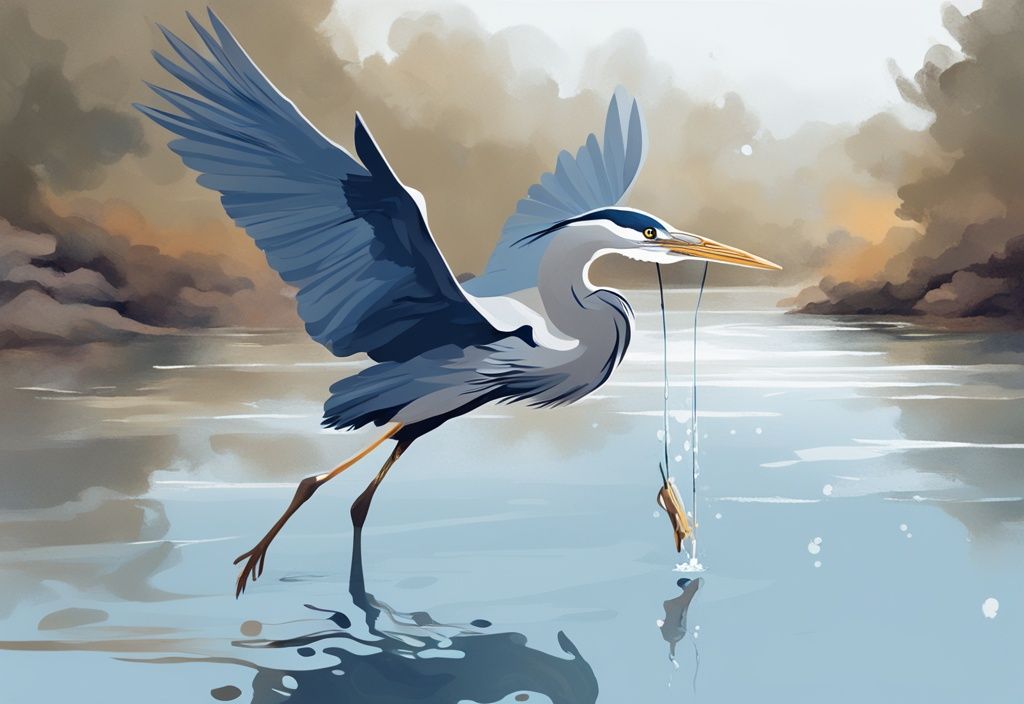Ever wondered what lurks beneath the surface, eyeing that fish you just reeled in? In the vast and dynamic ecosystems of our planet, fish are a crucial link in the food chain, serving as a vital source of nourishment for a diverse array of predators. From the skies above to the depths of the ocean, fish face a multitude of threats from creatures that have evolved remarkable hunting skills.
This complex web of predation is not only fascinating but essential for maintaining ecological balance. Understanding the various predators of fish, from birds and marine mammals to reptiles and even insects, offers insights into the intricate relationships that sustain life in aquatic environments.
As we explore the myriad of fish predators, we’ll uncover the unique adaptations and strategies these hunters employ to capture their slippery prey. This journey through the wild world of fish predation will illuminate the roles these predators play in shaping aquatic ecosystems and highlight the survival tactics fish use to evade them.
Join us as we delve into the fascinating realm of aquatic predators, revealing the hidden battles beneath the water’s surface and the remarkable creatures that call these environments home.
Birds That Prey on Fish
When it comes to the natural world, birds have honed some incredible skills for catching fish. From the patient herons to the swift eagles, these avian predators showcase a variety of hunting techniques that are as fascinating as they are effective. Let’s dive into the world of fish-eating birds and explore their unique methods.
Common Fish-Eating Birds
- Herons, Egrets, and Storks: Picture this: a heron standing still in the shallows, its eyes locked on the water. With a sudden thrust of its long, sharp beak, it spears a fish with the precision of an Olympic fencer. These birds are the masters of patience and timing.
- Gulls and Terns: Ever seen a gull dive-bombing the water? It’s a sight to behold! These birds perform dramatic plunge-dives, soaring high before plunging headfirst to snatch fish just beneath the surface. It’s a game of speed and accuracy, and they play it well.
- Cormorants and Pelicans: Watch a cormorant dive, and you’ll see poetry in motion. Using their webbed feet, they propel themselves underwater, while pelicans scoop up fish in their expandable throat pouches. It’s a team effort between nature and skill.
- Puffins, Kingfishers, Ospreys, and Eagles: These birds bring a whole new level of finesse to the art of fishing. Ospreys and eagles, with their razor-sharp talons, snatch fish from the water like seasoned anglers. Meanwhile, kingfishers dive from perches, executing perfect catches with every plunge.
Hunting Techniques of Avian Predators
- Spear Fishing: Imagine standing motionless, waiting for the right moment. That’s the life of herons and egrets, who use their pointed beaks to impale unsuspecting fish. It’s a test of patience and precision.
- Plunge-Diving: Gulls and terns take the plunge, quite literally. From high above, they spot their prey and dive into the water with impeccable timing. Their keen eyesight and daring dives make them formidable hunters.
- Sharp Vision: Eagles and ospreys boast vision that would make any angler envious. They can spot fish from astonishing distances, hunting from high vantage points with a keen eye on their next meal.
- Diving Techniques: Cormorants are the underwater acrobats of the bird world. Using their wings and feet, they chase down fish with agility, proving that sometimes, the best catches are made beneath the surface.

Marine Mammals as Fish Predators
When it comes to the underwater world, marine mammals are some of the most skilled fish hunters out there. From the icy waters of the Arctic to the warm currents of the tropics, these creatures have honed their skills to perfection, making them formidable predators.
Key Marine Mammal Predators
Imagine you’re out on the sea, and suddenly you spot a sleek seal darting through the waves. These agile pinnipeds, which include seals, sea lions, and walruses, are masters of the hunt. With their streamlined bodies and powerful flippers, they glide effortlessly through the water, always on the lookout for their next meal. It’s a sight to behold!
Then there are the orcas and dolphins, the brainiacs of the ocean. These cetaceans are known for their intelligence and teamwork. Ever seen a pod of dolphins working together to corral fish? It’s like watching a well-choreographed dance, with each dolphin playing its part to perfection. And don’t get me started on humpback whales! Their bubble-net feeding is nothing short of a marine magic trick, trapping fish in a swirling vortex of bubbles.
Feeding Strategies of Marine Mammals
Now, let’s dive into the tactics these marine mammals use. Dolphins and orcas are all about speed and agility. They zip through the water, outpacing even the fastest fish. It’s like watching a high-speed chase, with the fish trying desperately to escape.
Seals and sea lions, however, take a different approach. They rely on stealth and patience, often lying in wait, perfectly still, until the right moment to pounce. It’s a game of patience and precision.
And then there’s the teamwork of orcas. These guys are the ultimate team players, herding fish into tight groups for an easy catch. It’s a strategy that not only fills their bellies but also strengthens their social bonds. Who knew hunting could be such a social affair?
Piscivorous Fish: Fish That Eat Other Fish
In the world of fishing, there’s something truly captivating about piscivorous fish—those aquatic hunters that feast on their own kind. These fish are the apex predators of their watery domains, each with its own unique set of skills and strategies for catching a meal. From freshwater lakes to the vast oceans, piscivorous fish are a testament to nature’s ingenuity and the thrill of the hunt.
Examples of Piscivorous Fish
When you’re out on the water, it’s hard not to marvel at the sheer variety of piscivorous fish. In freshwater, you’ve got the likes of largemouth bass and pike, each a master of its own hunting ground. Ever seen a bass leap out of the water to snag a smaller fish? It’s a sight that never gets old. And then there’s the pike, with its torpedo-like body and razor-sharp teeth, lurking in the shadows like a silent assassin.
But let’s not forget the ocean’s heavy hitters. Tuna, marlin, swordfish, sharks, and groupers—they’re the big leagues of piscivores. Each one is a marvel of evolution, perfectly adapted to its environment. Ever wonder how a marlin can slice through the water with such speed? Or how a grouper can blend into the reef, waiting for the perfect moment to strike? It’s all part of the magic that makes fishing such an exhilarating adventure.
Predatory Techniques of Piscivorous Fish
Now, let’s dive into the tactics these fish use to outsmart their prey. Speed is a common weapon in their arsenal. Imagine a tuna, a blur of silver, darting through the water in pursuit of its next meal. It’s like watching a high-speed chase beneath the waves. But speed isn’t the only trick up their sleeve.
Some piscivorous fish are masters of stealth, employing ambush tactics to catch their prey off guard. Picture a pike, motionless among the reeds, suddenly springing to life with a flash of teeth and scales. And then there’s camouflage—nature’s way of giving these predators the upper hand. By blending into their surroundings, they become invisible hunters, waiting for the perfect opportunity to strike.

These techniques are a testament to the adaptability and cunning of piscivorous fish. It’s a game of patience and precision, where every move counts. And as anglers, we get to witness this incredible dance of predator and prey, learning from it and, perhaps, even outsmarting these aquatic hunters ourselves. Isn’t that what makes fishing such an endlessly fascinating pursuit?
Reptiles That Hunt Fish
When it comes to fish predators, reptiles are often the unsung heroes of the aquatic world. Their hunting prowess is something to behold, and they play a pivotal role in keeping fish populations in check. Let’s dive into the fascinating world of these scaly hunters and their impressive techniques.
Notable Reptilian Fish Predators
Imagine the scene: a saltwater crocodile, lurking just beneath the surface, its eyes barely breaking the water’s edge. These giants, along with alligators and caimans, rule their watery realms as apex predators. They’re not just strong; they’re agile, making them masters at snatching fish right out of the water. But they’re not alone in this pursuit. Snapping turtles, with their prehistoric appearance, and water snakes, with their sleek bodies, are also part of this elite group of fish hunters. Each of these reptiles has carved out a niche in their ecosystem, ensuring that fish populations remain balanced. Ever wondered how they do it? Let’s explore their hunting techniques. If you’re interested in essential gear, check out our guide on the best 3 survival fishing kits.
Reptilian Hunting Techniques
Reptiles are the stealthy ninjas of the water world. They blend seamlessly into their surroundings, waiting patiently for the perfect moment to strike. Picture a snapping turtle, camouflaged among the rocks, suddenly lunging forward with surprising speed. It’s all about the element of surprise. Their powerful jaws snap shut with precision, leaving little chance for escape. And then there are the water snakes, gliding effortlessly, launching sudden attacks that catch fish off guard. It’s a game of patience, precision, and power. These reptiles have adapted beautifully to their environments, showcasing an incredible blend of speed and stealth. Who knew hunting could be such an art form?
Amphibians and Their Fish Diet
Amphibians are fascinating creatures with a knack for variety in their diet, and some have developed a taste for fish. Let’s dive into the world of these slippery hunters and explore how they make fish a part of their menu.
Amphibians Known for Eating Fish
Imagine you’re by a quiet stream, the air thick with anticipation. Suddenly, a giant salamander glides through the water, its senses finely tuned to the scent of fish. These hefty creatures are masters of stealth, lurking in rivers and streams, waiting for the perfect moment to strike. Then there’s the bullfrog, a true opportunist, ready to leap at any chance to snag a meal. With legs like coiled springs, they can surprise any unsuspecting fish nearby. But the amphibian fish feast doesn’t stop there. African sharp-nosed frogs and various newt species also have a penchant for small fish and fish eggs, making the amphibian world a diverse buffet of fishy delights.
Amphibian Feeding Behaviors
The art of catching fish is an amphibian specialty, full of patience and precision. Picture a frog, its eyes locked on a target, tongue poised like a loaded slingshot. With a flick, it snatches its meal with speed that seems almost magical. Salamanders, meanwhile, are the sprinters of the aquatic world, lunging swiftly to secure their prey. Amphibians are nothing if not adaptable, always ready to seize the opportunity when fish are plentiful. This versatility not only ensures their survival but also keeps the aquatic ecosystem in balance. So next time you’re near a pond, take a moment to appreciate these skilled hunters and their role in the underwater world.
Insects and Crustaceans That Prey on Fish
Ever wonder what creatures in the water are eyeing your catch? Let’s dive into the world of insects and crustaceans that have developed a taste for fish. These crafty critters have honed their skills to become expert hunters in their watery domains.
Insect Predators of Fish
Picture this: you’re casting your line in a serene freshwater pond, and beneath the surface, a whole drama unfolds. Among the stars of this underwater show are giant water bugs and predacious diving beetles. These insects are not just any bugs—they’re the ninjas of the aquatic world, equipped with tools that make them formidable fish hunters. Giant water bugs, for example, have these strong forelegs perfect for grabbing their prey, and their piercing mouthparts? They inject enzymes that turn the insides of their catch into a fish smoothie. Pretty wild, right? Then there are the dragonfly larvae and predatory diving beetle larvae, lurking with their sharp mouthparts ready to snag a small fish. Their stealth and precision make them a real threat in the freshwater food chain. Ever thought about how these little guys could be so effective? It’s a fascinating reminder of the intricate balance in nature.
Crustacean Predators of Fish
Now, let’s talk crustaceans—those armored warriors of the water. Freshwater crayfish, crabs, and lobsters are the heavyweights here, using their robust claws to capture and dismantle fish. Imagine a crayfish, perfectly camouflaged among the rocks, waiting patiently like a seasoned angler for the perfect moment to strike. And when it does, it’s swift and decisive. Crabs and lobsters, on the other hand, might take a more active approach, chasing down their prey with surprising agility. Their ability to adapt their hunting strategies to different environments is nothing short of impressive. It’s like watching a well-rehearsed dance, where every move is calculated for success. These crustaceans remind us of the relentless pursuit of survival in the aquatic world, showcasing a blend of patience and power that every angler can appreciate.
Cephalopods as Fish Predators
Cephalopods are some of the most captivating hunters in the ocean, showcasing a mix of intelligence and agility that makes them formidable fish predators. Let’s dive into the world of these intriguing creatures and explore their hunting prowess.
Common Cephalopods That Eat Fish
Cephalopods, like squids, cuttlefish, and octopuses, are the stealthy hunters of the sea. Imagine a squid, its sleek body slicing through the water with the grace of a ballet dancer. These creatures are built for speed, making them adept at chasing down fish in open waters. Then there’s the cuttlefish, often hanging around coastal areas, using its unique body to maneuver through the nooks and crannies of the ocean floor. And let’s not forget the octopus, the ultimate master of disguise. With the ability to change color and texture, it can vanish into the background, lying in wait for the perfect moment to strike. Have you ever wondered how it feels to be an unsuspecting fish in their path?
Hunting Techniques of Cephalopods
Cephalopods are like the ninjas of the sea, employing a range of clever techniques to snag their prey. Their bodies are flexible, and their tentacles, lined with powerful suckers, can grab a fish with pinpoint accuracy. Once they’ve got their catch, they use sharp beaks to make quick work of their meal. Camouflage is their secret weapon, allowing them to sneak up on fish without a hint of their presence. This blend of physical prowess and strategic cunning makes cephalopods a fascinating part of the aquatic food chain. Ever thought about how they manage to pull off such stealthy maneuvers?
Other Mammalian Predators of Fish
Bears and Their Fish Diet
Imagine standing by a rushing river in North America, watching the majestic bears during the salmon runs. It’s a spectacle! These furry giants gather by the water, waiting to snatch the migrating salmon with their sharp claws and powerful paws. It’s like watching nature’s own fishing tournament. This seasonal feast is crucial for bears, helping them build up the fat reserves needed to survive hibernation. And let’s not forget, they’re doing their part for the ecosystem too, spreading those fishy nutrients throughout the forest. Nature’s way of recycling, right?

Otters, Raccoons, and Other Mammals
Now, if you’ve ever seen an otter in action, you know they’re the acrobats of the aquatic world. With their sleek, streamlined bodies and webbed feet, otters glide through the water like little torpedoes. Their sharp teeth and agile moves make them expert fish hunters. Often, they team up to corral fish into shallow waters, making the catch a bit easier. Teamwork makes the dream work, even in the animal kingdom!
Raccoons, on the other hand, are the night-time ninjas of the fishing world. These clever critters use their dexterous front paws to feel for fish in the murky shallows. It’s like fishing in the dark with nothing but your hands. If you’re curious about what fish inhabit these waters, you might wonder what fish are in Lake Michigan. Talk about skill!
Then there are the minks and some bat species, who also fancy a fishy snack when the opportunity arises. These mammals rely on their keen senses and agility to nab their aquatic prey. It’s fascinating to see the variety of strategies these mammals employ to catch fish. Nature never ceases to amaze, does it?
Defensive Mechanisms of Fish Against Predators
Fish have developed a fascinating array of defenses to outsmart their predators. These strategies range from clever group tactics to impressive physical adaptations, all aimed at survival in the wild.
Schooling Behavior and Camouflage
Imagine a shimmering school of fish, darting through the water like a living tapestry. This isn’t just a beautiful sight—it’s a survival tactic. When fish swim in large groups, they create a dazzling display that can baffle predators. Ever tried picking out a single fish from a swirling mass? It’s not easy! This strategy, known as schooling, gives each fish a better chance of making it through the day unscathed.
But that’s not all. Many fish are masters of disguise, using camouflage to blend perfectly with their surroundings. It’s like they have their own invisibility cloak, mimicking the colors and patterns of their environment. This stealthy approach keeps them hidden from the prying eyes of predators. Quite the trick, right?
Physical Defenses: Spines, Scales, and Toxins
Now, let’s talk about the more hands-on defenses. Some fish are like underwater tanks, equipped with spines and scales that act as a formidable shield against attacks. Those sharp spines can deliver a nasty surprise to any predator thinking about making a meal out of them. It’s a bit like trying to bite into a porcupine—ouch!
And then there are the fish that take things to another level with toxins. These chemical defenses can be downright dangerous, even lethal, to their would-be attackers. It’s nature’s way of saying, “Back off, buddy!” This makes predators think twice before taking a bite, ensuring these fish aren’t easy targets.
FAQ
What are the main predators of fish?
Fish have quite the lineup of predators waiting to make a meal out of them. Picture this: a majestic heron swooping down, or an eagle with its keen eyes spotting a glimmer in the water. Then there are the marine mammals, like playful dolphins and stealthy seals, always on the lookout. And let’s not forget the bigger fish with a taste for their smaller kin. Even reptiles, amphibians, and insects get in on the action. Crustaceans and cephalopods join the feast too, along with certain mammals. It’s a fish-eat-fish world out there, and then some!
What adaptations help fish avoid predators?
Fish are no pushovers when it comes to dodging danger. Ever seen a school of fish darting this way and that? It’s a mesmerizing dance that leaves predators scratching their heads. Camouflage is another trick up their sleeve, letting them vanish into their watery world. Some fish sport spines or tough scales, a kind of armor against hungry foes. And for those particularly bold fish, producing toxins is their way of saying, “Eat me if you dare!” It’s all about survival in the big blue.
Conclusion
Fish play a pivotal role in aquatic ecosystems, acting as both prey and predators. They’re essential for keeping the balance in these watery worlds, moving energy and nutrients through the food web. It’s fascinating to think about the variety of fish predators out there, from birds and marine mammals to reptiles and even insects. Each predator has its own unique hunting style, adding layers of complexity to these ecosystems.
Ever watched a bird dive with precision to snag a fish, or seen marine mammals team up for a catch? These moments highlight the dynamic nature of aquatic food webs. Fish are a crucial food source for many predators, each contributing to the ecosystem’s health and stability.
Conservation efforts are key to maintaining these delicate balances. By protecting fish populations, we ensure the survival of their predators and the overall health of aquatic ecosystems. This not only supports biodiversity but also brings ecological and economic benefits. Through conservation, we can continue to enjoy and learn from the vibrant life thriving beneath the water’s surface.


